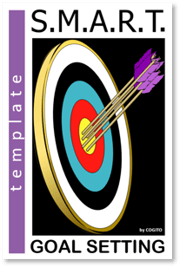Brand Balance Board

Beyond the rational reasons for believing in a brand, the balance between relevancy, ability to win, brand equity, brand personality, value proposition - is the prerequisite for telling a good story, delivering a better customer experience and converting traffic into revenue.
This quest for the balance point between what you should, what you want, what you can, what you must is at the heart of the old Japanese wisdom IKIGAI - the reason for being.
Applying the IKIGAI mindset to brand marketing is an effective way to answer the KO question of brand owners: "What would happen - from the target group's point of view - if my brand ceased to exist? In the majority of cases the dreaded answer is "nothing, absolutely nothing" ...
Marketers would be well advised to try to clearly define the raison d'être of their brand - its IKIGAI. The result of this exercise is
- a strong core essence
- a unique mission statement
- a competitive value proposition
- a compelling story telling
- a conclusive reason to believe
%20aligned%20brand%20story/Teaser%20Foto/IKIGAI%20BALANCE%20BOARD-1.png?width=1269&name=IKIGAI%20BALANCE%20BOARD-1.png)
Discover the powerful archetypal branding framework!
We strongly recommend following the four-step approach
Step 1: the target audience
Why do we exist? What problems do we solve? What do customers/users gain from our existence? What good can we do for our target audience? Help whom, how do we help, what do we help? What is missing?
--> Refer to useful tools, models and methods such as personality portraits, empathy mapping, customer portraits, customer journey, touchpoint analysis, description of customer processes, information on usage and attitude, results of the customer intimacy exercise regarding feels and/or wants to be treated
Step 2: Brand capabilities
What distinguishes us, what are we particularly good at? What can we do better than others?
What are our experiences, knowledge, abilities, talents? What are the things we can and want to develop? What new talents do we develop?
--> Refer to results from the archetypal brand building exercise, such as lessons learned, most impressive talents and attributes, best practices and lighthouses, key factors, visibility, connectivity, lead management, conversion to sales, customer loyalty, content management
Step 3: the brand vision
What do we want to use our skills for? What do we like to do? What is our enthusiasm?
--> deepening of brand identity, personality traits, tone of voice, customer experience, user interface, brand equity, credibility, relevant points, points of differentiation
Step 4: the value proposition
What are we getting paid for? What do customers/users expect from us? What do customers/users value most? How can the offers (services/products) be marketed attractively and profitably?
--> Conduct an target potential assessment, life value estimates, portfolio health checks
Segmentation, opportunity mapping, value chain analysis, price analysis
In the transparency phase, possible shortcomings are then identified and addressed: As long as the IKIGAI balance point - the raison d'être - is not clear, either the company's performance, or the brand equity, or the customer needs or brand history will remain unsure and not sustainable
Based on the transparency phase the possible mismatches can then be identified and treated : as long as the IKIGAI point of equilibrium - the reason of being - is not clearly appearing, either the business performances, or the brand equity, or the customers' needs or the brand story will prove unsure and not sustainable.
Once your brand has (re)-aligned you can start plan your campaign. Make sure you define goals upfront to better track progesses and rework your plans in time. Use for this our Smart Goals Setting Template Get your free copy here
Get your free copy here


